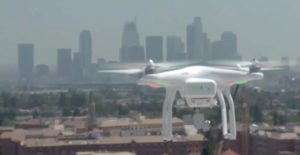The comment period for the Remote ID for Drones NPRM closed yesterday. There were more than 50,000 comments posted on the NPRM, including and 89 page comment by the world’s leading drone manufacturer, DJI. While DJI has been active in developing and implementing technology that could simplify Remote ID for users, the company fears that the rule’s requirements place an unreasonable burden on all stakeholders, from manufacturers to individual pilots to industrial clients, who will end up shouldering the costs of a burdensome solution.
In a press release issued today, DJI says that an independent economic study finds that costs of compliance with the proposal far exceed the FAA’s estimate – and in fact are 9 times higher. DJI is urging the FAA to take the comments into consideration and reconsider the rule.
The following is a DJI press release.
DJI Urges FAA To Reconsider Flawed Remote ID Rule
Independent Economic Analysis Finds Costs Nine Times As High As FAA Estimate
DJI’s filing includes an independent economic study that concludes the FAA’s Remote ID proposal would prove nine times as costly as the FAA’s estimates, imposing $5.6 billion worth of burdens on society over the next decade. The analysis finds many of those costs could be obviated if drone pilots could choose between two different methods of compliance, rather than doing both as the FAA proposed.
The economic analysis was prepared by Dr. Christian Dippon, Managing Director at NERA Economic Consulting, who considered the societal costs of the FAA’s proposed rule. He concluded the average monthly cost of a Remote ID network-based service for a drone user would be $9.83, rather than the FAA’s $2.50 estimate; that demand for drones would fall 10 percent if the FAA’s proposals were imposed as written; and that total costs over ten years would be $5.6 billion instead of the FAA’s $582 million estimate.
“We have known for years that Remote ID will be required by governments worldwide and will provide members of the public with confidence in productive drone uses, but the FAA’s deeply flawed proposal poses a real threat to how American businesses, governments, educators, photographers and enthusiasts can use drones,” said DJI Vice President of Policy & Legal Affairs Brendan Schulman. “We hope our detailed economic analysis and comments, as well as tens of thousands of comments from other concerned parties, will encourage the FAA to develop a more risk-based, balanced and efficient Remote ID rule, so our customers and the entire industry are not hurt by the final outcome.”
DJI’s comment was one of more than 51,000 filed by the FAA’s March 2 deadline, and is expected to be available soon at this link. DJI’s comment is also available for download at this link. NERA’s economic analysis is available for download at this link.
DJI’s comment also expands on many other points DJI has made previously about the risks of the FAA’s proposal, which would hurt people who have safely and successfully used drones across the country for years, hamper the adoption of a technology that is bringing enormous value to America, and create costs and complications that far outweigh the benefits of the FAA’s broadcast-and-network approach. Most importantly, a burdensome proposal undermines the government’s own goals for Remote ID.
“A Remote ID requirement that is costly, burdensome, complex, or subject to multiple points of failure, will be a requirement that fails,” DJI wrote in its submission. “We offer these comments, many of which are highly critical of aspects of the FAA’s proposal, in the sincere interest of promoting a good final rule for the FAA, the U.S. Government, and the UAS industry.”
DJI has advocated for favorable solutions to Remote ID for years, recognizing that authorities need to understand drone activity in real time in order to allow full integration of drones in the skies. DJI recently demonstrated a “Drone-to-Phone” broadcast Remote ID solution which uses an open, non-proprietary industry standard and provides Remote ID information on commonly-available smartphones without imposing any extra cost or effort on drone operators. This demonstration showed that Remote ID can be accomplished in a way that is far cheaper and easier than what the FAA has proposed.
Miriam McNabb is the Editor-in-Chief of DRONELIFE and CEO of JobForDrones, a professional drone services marketplace, and a fascinated observer of the emerging drone industry and the regulatory environment for drones. Miriam has a degree from the University of Chicago and over 20 years of experience in high tech sales and marketing for new technologies.
For drone industry consulting or writing, Email Miriam or (for paid consulting engagements only) request a meeting through AdvisoryCloud:
TWITTER:@spaldingbarker
Subscribe to DroneLife here.
https://dronelife.com/2020/03/03/analysis-puts-remote-id-for-drones-costs-9x-higher-than-faa-estimate-dji-urges-faa-to-reconsider/
 Unmanned Aerial Vehicle The latest drone news
Unmanned Aerial Vehicle The latest drone news





